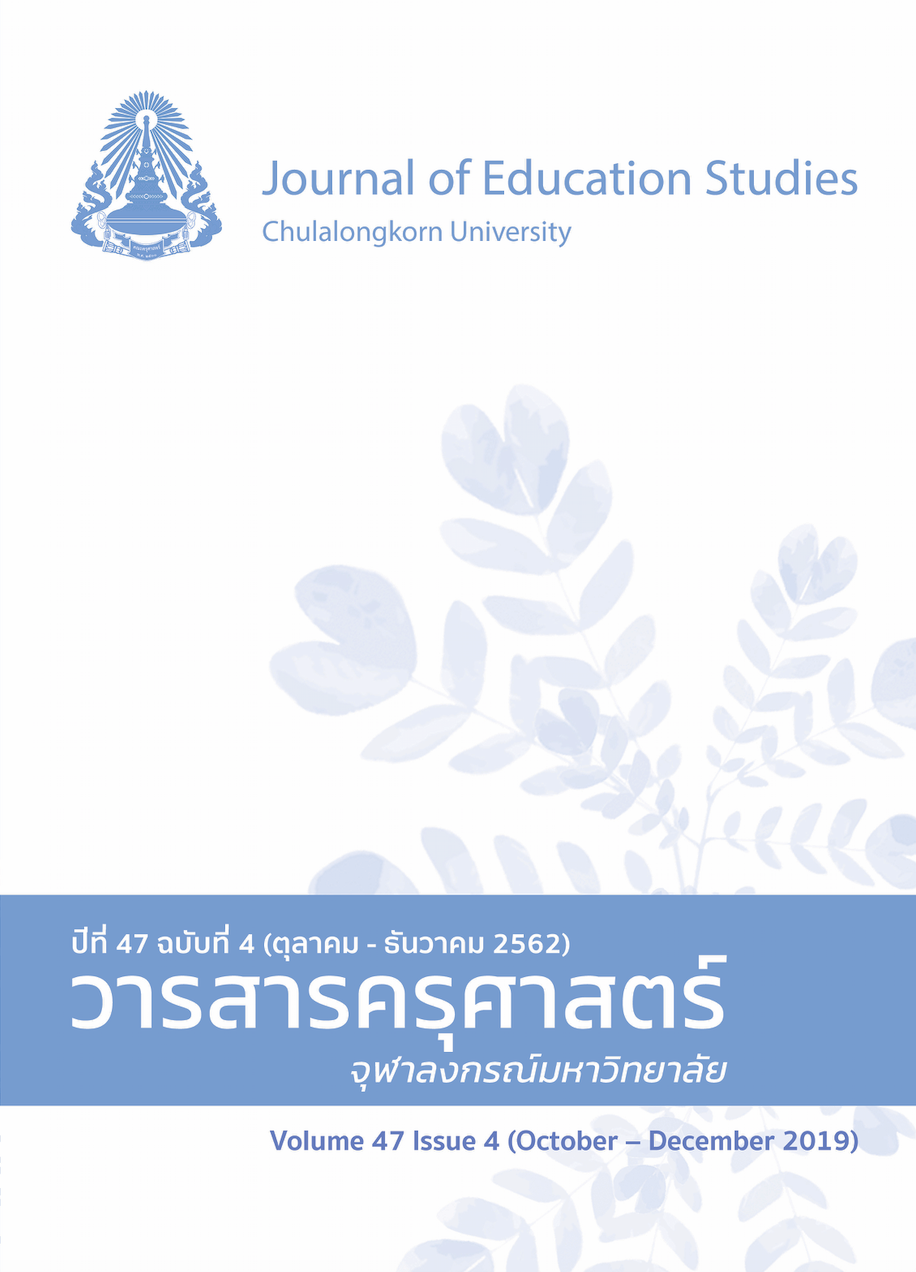An Analysis of the Conditions, Needs, and Problems faced by Youth When Accessing Lifelong Learning Resources in the Areas Surrounding Chulalongkorn University
Keywords:
SERVICES OF LIFELONG LEARNING RESOURCES, LIFELONG LEARNING RESOURCES, SURROUNDING AREA OF CHULALONGKORN UNIVERSITYAbstract
The objective of this research was to analyze the conditions and problems faced by youth and their needs for lifelong learning resources in the areas surrounding Chulalongkorn University. The participants of this study were 400 youths who have used the services of lifelong learning resources offered in the areas surrounding Chulalongkorn University, including libraries, museums, the science and technology park, art galleries, the sports and recreation center, and public parks. The research instrument used was a questionnaire. Data were analyzed by percentage, mean and standard deviation.
The results of this study indicated that self-learning was the most popular learning technique (59.58%) and activity (45.59%) associated with the available lifelong learning resources. In terms of the problems associated with the use of services available from these learning resources, the participants reported that they faced the problem of insufficient learning equipment, with a high mean score (M = 3.58). In terms of the needs for the services available from learning resources, the questionnaire respondents indicated the need for proper location arrangement, with a high mean score (M = 4.05).
As a result of these findings, the researcher developed guidelines for managing the relevant learning resources, which consisted of five aspects; namely, activity content, learning resources, location, management, and promotion of lifelong learning. These guidelines should prove valuable for stakeholders in both public and private sectors for developing and managing learning resources that meet youth needs and interests.
References
กฤษมันต์ วัฒนาณรงค์. (2552). เทคนิคการสร้างแรงจูงใจใฝ่เรียนรู้ เอกสารประกอบการบรรยายให้กับคณาจารย์หมวดวิชาศึกษาทั่วไป มหาวิทยาลัยเกษตรศาสตร์. สืบค้นจาก http://met.fte.kmutnb.ac.th/files/motivation1.pdf
ชัยยศ อิ่มสุวรรณ์. (2544). การศึกษาตามอัธยาศัย. กรุงเทพมหานคร: ศูนย์การศึกษาตามอัธยาศัย กรมการศึกษานอกโรงเรียน.
ชูศักดิ์ เอื้องโชคชัย. (2558). การพัฒนารูปแบบการส่งเสริมการเรียนรู้ตามอัธยาศัยเพื่อเสริมสร้างคุณลักษณะการเป็นบุคคลแห่งการเรียนรู้ตลอดชีวิตสำหรับเยาวชน (วิทยานิพนธ์ปริญญาดุษฎีบัณฑิต ไม่ได้ตีพิมพ์). จุฬาลงกรณ์มหาวิทยาลัย, กรุงเทพมหานคร.
ดวงกมล ไตรวิจิตรคุณ. (2550). วิธีวิทยาการวิจัยทางพฤติกรรมศาสตร์. กรุงเทพมหานคร: คณะครุศาสตร์จุฬาลงกรณ์มหาวิทยาลัย.
พระราชบัญญัติการศึกษาแห่งชาติ. (2542). พระราชบัญญัติการศึกษาแห่งชาติ พ.ศ. 2542 แก้ไขเพิ่มเติม (ฉบับที่ 2) พ.ศ. 2545 และ (ฉบับที่ 3) พ.ศ. 2553. สืบค้นจาก https:// person.mwit.ac.th/01-Statutes/NationalEducation.pdf
สำนักเลขาธิการสภาการศึกษา. (2552). ข้อเสนอการปฏิรูปการศึกษาในทศวรรษที่ 2 พ.ศ. 2552-2561. กรุงเทพมหานคร: พริกหวานกราฟฟิค.
อาชัญญา รัตนอุบล และ คณะ. (2548). การจัดการเรียนรู้ของแหล่งการเรียนรู้ตลอดชีวิต: สวนสาธารณะ. กรุงเทพมหานคร: วี.ซี.ที. คอมมิวนิเคชั่น.
ภาษาอังกฤษ
Benson, P. (2001). Teaching and researching autonomy in language learning. Harlow: Pearson Education.
Borich, G, D. (2004). Effective teaching method (5th ed.). Upper Saddle River, NJ: Pearson Education.
Knowles, M. (1975). Self-directed learning: A guide for learners and teachers. Chicago, IL: Follett.




